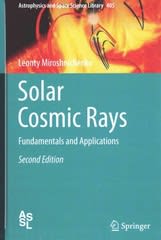A model of sheared fluid flow flow rates are increased, most flows undergo a transition from 'laminar' flow ooth flow parallel to the boundaries ) to 'turbulent '(chaotic ) flow . figure 16 (a ) of the notes for a schematic of a sheared flow . In section 4.2 of the Notes , it is n analytically for a similar model how large amplification of an initial condition is possible ite linear stability. You are not expected to produce such an analytical explanation here. ad I, use the numerical techniques you have seen to explore the properties of the system following model (Trefethen et al. 1993) was designed to show that linearisation about an brium point , and in particular the calculation of eigenvalues (MAS222 ), is notalways useful edicting the behaviour of a dynamical system ! 2-d Trefethen model is defined u = Au + llu|| Bu, A = -1/R 1 0 (3.1 ) - 2 / R u = (u1, U2) and |lull = Vu? + u2, R > 0. See figure 16 (a ) of the notes again : we ose that uj is representative of disturbances to the main streamwise flow , in the same tion as U , and that U2 represents motions going perpendicular to the wall fixed point of (3.1) isu = 0, which represents the 'laminar' flow. (3.1 ) also has an cting nonlinear (non -zero ) fixed point that we will consider to be 'turbulence '. (Baggett 1995 is a 3-d extension with the same properties , except that the nonlinear attractor is ic ; case B 4 therein .) risation about the solution u = 0 gives u = A u, and A has eigenvalues -1/ R and - 2/ R. are negative which implies that the laminar point u = 0 is stable , but this is not the whole y... the linearisation is valid for small perturbations, but how small? i.e... ere is the basin boundary between the fixed point and the chaotic state ? between the laminar and turbulent states )(Some of my recent work has focussed methods to find the smallest disturbance that causes transition, i.e. the point on the basin dary closest to the fixed point , e.g . Kerswell , Pringle and Willis 2014 .) Make a copy of e.g. chaos _lab2 rossler. ipynb and adapt it to integrate (3.1 ) in time (To simplify the change from the 3-dimensional Possler system to this 2-dimensional system , you could just set the third component to zero :x [2] =0 .) Generate a plot showing ||u | | as a function of time for initial conditions u = (0, E) for E = 10 -6, 10-, ..., 10 -2 with R = 25. (A log -scale on the y-axis may help; see Trefethen et al. (1993 ), figure 10.) What happens to the initial transient for other values of R? What do the results suggest from the point of view of transition to turbulence







